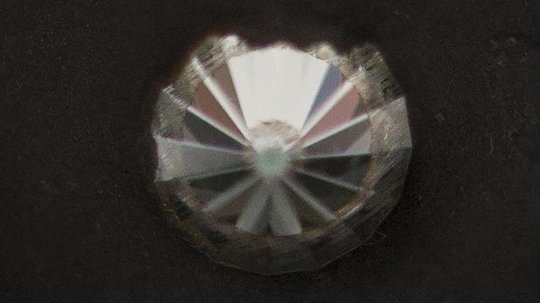
How do you cut through hard materials? How about a diamond useful for cutting through hard materials? New synthetic diamond is predicted to be harder than a jeweler’s diamond. This is very exiting.

How do you cut through hard materials? How about a diamond useful for cutting through hard materials? New synthetic diamond is predicted to be harder than a jeweler’s diamond. This is very exiting.
Australian researchers have discovered how to make a special kind of diamond that is harder than the regular variety — and otherwise only found where meteorites have hit the Earth.
Researchers in Australia discovered a rare diamond during lab experimentation — a diamond useful for cutting through ultra-solid materials on mining sites.
The Australian National University (ANU) has led an international project to make a diamond that’s predicted to be harder than a jeweler’s diamond.
The newly discovered diamond can be defined as a purer, smaller form of a diamond found at meteorites impact sites.
First analysis suggests that their creation is harder than a jeweler’s diamond.

Bradby and her colleagues made the Lonsdaleite in a diamond anvil at 400 degrees Celsius, halving the temperature at which it can be formed in a laboratory.
Dr Bradby from the ANU Research School of Physics and Engineering said: “We’ve been able to make it at the nanoscale and this is exciting because often with these materials ‘smaller is stronger,'”
“This new diamond is not going to be on any engagement rings. You’ll more likely find it on a mining site — but I still think that diamonds are a scientist’s best friend. Any time you need a super-hard material to cut something, this new diamond has the potential to do it more easily and more quickly,” Professor Jodie Bradly said in a news release.
Scientists have produced a new, harder diamond that can be used for cutting through solid materials at mining sites.
Her research team successfully synthesized nano-sized lonsdaleite, a hexagonal diamond of glassy carbon, at 400 degrees Celsius, half the temperature scientists had previously thought was required.
Bradby also explained: “The hexagonal structure of this diamond’s atoms makes it much harder than regular diamonds, which have a cubic structure. We’ve been able to make it at the nanoscale and this is exciting because often with these materials ‘smaller is stronger’.”
Because of the fact that lonsdaleite is found at meteorite impact sites, researchers assumed conditions replicating such strikes were essential to make lonsdaleite. But the new research — published in the journal Scientific Reports — suggests “high purity lonsdaleite is readily formed under strain.”
“The discovery of the nano-crystalline hexagonal diamond was only made possible by close collaborative ties between leading physicists from Australia and overseas, and the team utilised state-of-the-art instrumentation such as electron microscopes,” said Co-researcher Professor Dougal McCulloch from RMIT.
“We propose that the transformation is the result of intense radial plastic flow under compression in the diamond anvil cell, which lowers the energy barrier by ‘locking in’ favourable stackings of graphene sheets,” scientists explained.
Lonsdaleite is named after the famous British pioneering female crystallographer Dame Kathleen Lonsdale, who was the first woman elected as a Fellow to the Royal Society.